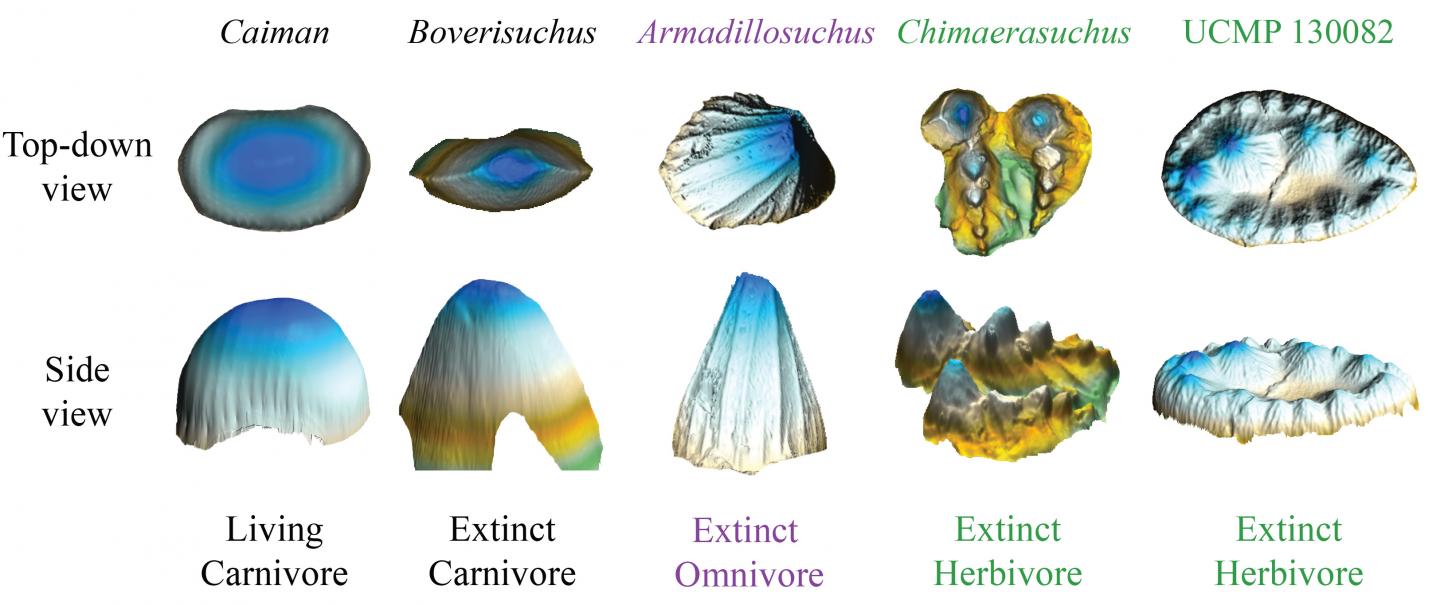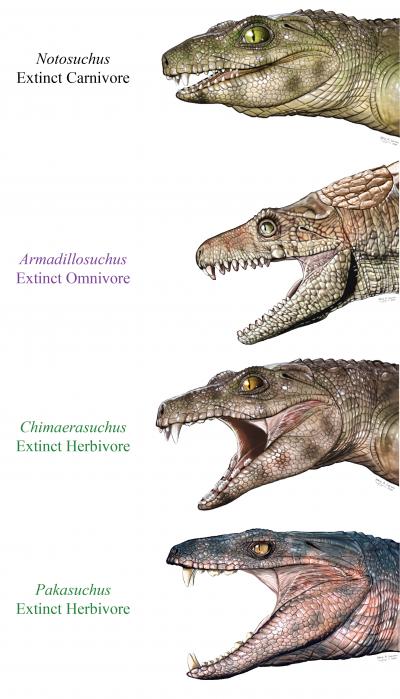Crocodiles Evolved to Be Vegetarian ‘At Least Three Times’ in the Past
Credit to Author: Becky Ferreira| Date: Thu, 27 Jun 2019 16:42:37 +0000
The idea of a vegetarian crocodile or alligator seems absurd, given how notorious these predators are for their sharp teeth, huge jaws, and deadly ambush skills.
But scientists studying tooth fossils from the age of dinosaurs have demonstrated that extinct crocodilians had a far wider range of diets than their modern relatives, and that some only ate plants, according to a study published on Thursday in Current Biology.
Keegan Melstrom and Randall Irmis, both researchers at the Natural History Museum of Utah, examined 146 teeth from 16 different extinct “crocodyliforms,” which refers to the family of reptiles that includes modern crocodiles, alligators, and gharials.

Using a technique that was initially developed to infer what extinct mammals ate, Melstrom and Irmis analyzed the dimensions and structures of the fossilized teeth and compared them to living crocodilians. In mammals, more complex dental structures suggest an omnivorous or herbivorous diet, while carnivores have relatively simple smiles adapted to tearing flesh.
The researchers found that crocodyliforms of the Mesozoic Period, better known as the age of the dinosaurs, evolved an enormous diversity of tooth shapes, and that some branches of the family tree contained omnivores and herbivores.
It’s not known what specific types of Mesozoic plants the vegetarian crocs ate, because their stomach contents were not preserved. It might be possible to learn more about their diet by searching for isotopes in the fossilized teeth, Melstrom said, but that comes at a high price to the specimens themselves.
“In the process of this analysis, parts of teeth are destroyed,” Melstrom told Motherboard in an email. “Currently we don’t have a great way of reconstructing the specific diet of these herbivores, but I am confident that future paleontologists will figure out a way!”
While previous studies had already produced evidence of herbivorous crocodilians, the new research showed that this adaptation popped up at least three times, and possibly as many as six, in the crocodile family’s past.

These veggie crocs were wiped out by the extinction event that killed the dinosaurs, while a fraction of the carnivores pulled through and evolved into the impressive predators that lurk in waterways today.
Melstrom hopes to shed more light on the mystery of why some meat-lovers were able to survive, while the plant-eaters went extinct, as part of his dissertation research.
“One interesting thing that we see in some fantastic, detailed studies of mammals from through the mass extinction is that mammal herbivores also go extinct, despite being totally different groups living in different areas,” he said. “What this may mean is that animals that specialized in plants may have been more susceptible to extinction.”
Modern crocodiles are opportunistic eaters when it comes to meat, and will munch on insects, crabs, fish, mammals, and more.
“You name it they’ll eat it,” Melstrom said. “So, to me, that tells me this flexibility may have allowed them to survive.” He noted that these are “just hypotheses and need to be rigorously tested.”
Regardless of why they ultimately died out, plant-eating crocodiles show that the living members of a family tree can never capture the full diversity and scope of their ancient forebears.
This article originally appeared on VICE US.